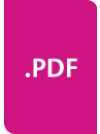This report investigates opportunities for professional learning when teachers work together to moderate their judgements of students’ work. It draws together key themes from previous research projects that have documented teacher interactions during moderation conversations. Teachers are required to report against National Standards and this is intended to be an effective lever to increase student achievement levels. Moderation conversations that provide rich professional learning about possible avenues for lifting achievement in the classroom will be needed if this policy is to work as intended. This review is a first step towards understanding how we can best support teachers as they do this important work.
Key Results
Key studies on which this synthesis has drawn
We found only a small number of empirical studies that discussed the value of social moderation for rich professional learning. Three of these studies (Klenowski & Adie, 2009; Klenowski & Wyatt-Smith, 2010; Wyatt-Smith, Klenowski, & Gunn, 2010) were set in Queensland, Australia, where the New Basics programme provided the impetus for large-scale moderation activities. These studies all appeared to explore the work of the same core group of 15 focus teachers: 12 female primary school teachers and three male secondary school teachers. These teachers were representatives from 15 schools, 11 of which were state schools and four of which were independent. The schools met in clusters and looked at moderation in the English, science and maths areas. The focus teachers were interviewed before and after moderation meetings and meetings were also observed. One paper (Klenowski & Wyatt-Smith, 2010) makes reference to a further 11 schools and 150 teachers (which included 35 focus teachers) who between them moderated the work of students in Years 4, 6 and 9.
Nixon and McClay’s (2007) study was much more small scale. It looked at collaborative writing assessment amongst a group of three elementary school colleagues in Canada. The teachers met every week during their professional development time over three and a half months to discuss their students’ written work. The study reports on observations of these meetings and on three interviews with one teacher, who was the focus of the study.
Reid (2007) studied writing moderation meetings in Scotland. Both primary and secondary teachers were part of this action research project. Six teachers were each interviewed twice. The team was involved in a series of planning meetings and a one-day moderation meeting. The moderation process was later extended to other teachers within the cluster group.
We found a New Zealand-based study by Limbrick and Knight (2005). They looked at writing moderation in six primary schools. The 29 teachers involved analysed the writing from the Years 1–8 students within their school first, and then took part in moderation meetings across the cluster of schools. Focus groups for teachers to reflect on the process were transcribed and the teachers were also surveyed about their attitudes towards writing.
There were also a few studies that looked at moderation at the tertiary level. Hunter and Docherty (2011) looked at the moderation process of five tutors from the University of Technology in Sydney. The tutors graded work from a small sample of students in a macroeconomics course. The moderation process involved an initial round of individual grading followed by a discussion of results, followed by a second round of grading and discussion. This study focused on looking at different categories of beliefs held by the tutors.
Kuzich, Groves, O’Hare and Pelliccione’s (2010) study investigated moderation of an online unit in the Bachelor of Education at Curtin University in Australia. Four tutors participated in the moderation process. They all had primary school teaching expereince but did not have prior expereince teaching at the tertiary level. The tutors met in person five times for three hours. The tutors were also interviewed once each and were surveyed. The meetings did not appear to be observed, so the data drawn on in this study came from the surveys and interviews.

